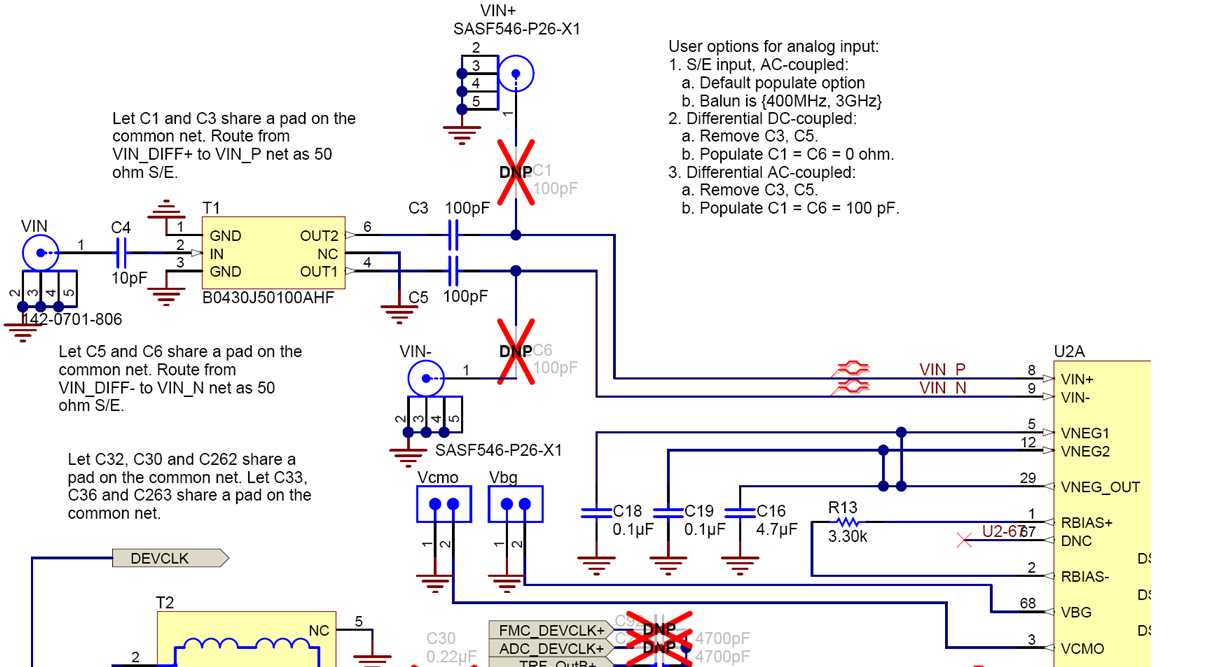The document "ADC12J2700EVM and ADC12J1600EVM User's" mentioned "Transformer-coupled signal input network allowing a single-ended signal source from 400 MHz to 3GHz". How to understand this feature? Does it mean that signal below 400MHz may not be accepted by this evaluation board ?
-
Ask a related question
What is a related question?A related question is a question created from another question. When the related question is created, it will be automatically linked to the original question.


